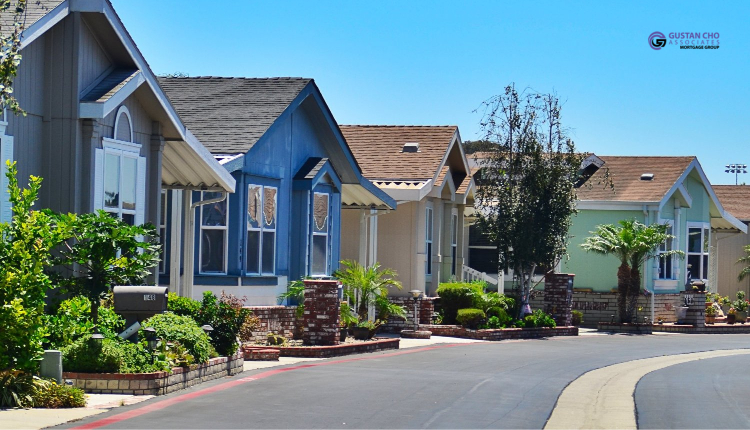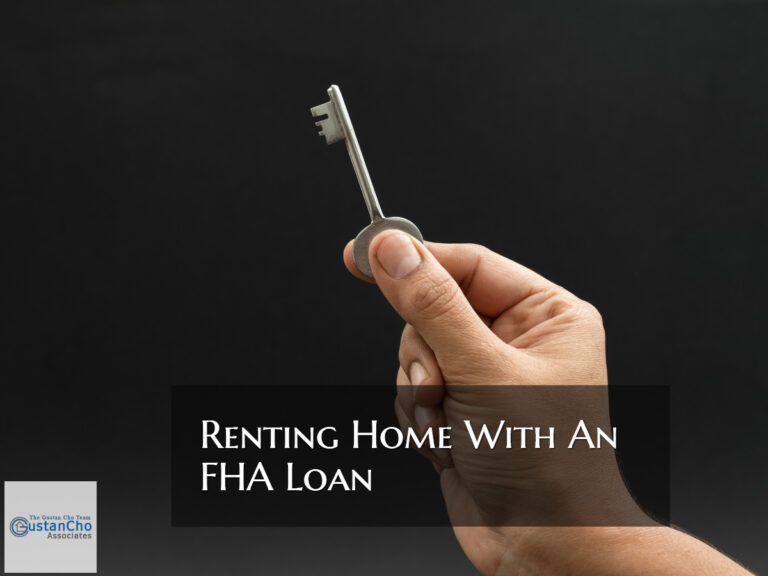Non-Occupant Co-Borrowers Mortgage Guidelines
In this blog, we will discuss and cover non-occupant co-borrower mortgage guidelines. Many times, when our clients attempt to qualify for a mortgage, the debt to income ratio can be a hurdle. To get over this hurdle you either need to pay off debt or make more money. But there are a few other solutions. Many clients find themselves adding a non-occupying co-borrower to their mortgage loan.
NON-Occupant Co-Borrowers Mortgage Guidelines On Cosigners
In theory, it is like having a cosigner for an auto loan. But they are not required to occupy the property. In this blog, we will go over the rules and regulations for non-occupying co-borrower hours with both FHA and conventional financing. The most common non-occupying co-borrower we see are parents of one of the Borrowers on the mortgage application. Let’s face it, your parents have done a lot for you over the years and they may be able to help you qualify for your dream home. In this article, we will cover and discuss NON-Occupant co-borrowers on mortgage loans.
NON-Occupant-Co-Borrowers Mortgage Guidelines On Conventional Loans
A common misconception in the mortgage industry is conventional loans do not allow non-occupant co-borrowers.
If you were told you could not use a non-occupying co-borrower with a conventional loan, you are dealing with a lender overlay. FHA Bad Credit Lenders do not have any additional overlays on conventional mortgages.
FHA Bad Credit Lenders has zero lender overlays on government and conventional loans. We have no lender overlays on non-occupant co-borrowers on FHA loans. We do allow the use of a non-occupant co-borrower on conventional mortgages. Per Fannie Mae, there are rules regarding who can be a non-occupying co-borrower.
Fannie Mae Non-Occupant Mortgage Guidelines on Conventional Loans
Fannie Mae defines a non-occupying co-borrower as someone who does not and will not occupy the subject property. Will sign the mortgage and all proper documents, such as a deed of trust or note. Does have joint liability with the mortgage and the borrowers. Cannot have relations to the transaction. Meaning they cannot be the seller of the property, the builder, or the real estate broker.
Non-occupying co-borrower may or may not have an ownership interest as documented on the title to the home. When utilizing a conventional loan with a non-occupying co-borrower, AUS findings will be run for approval (see our AUS BLOG for more details). The AUS will analyze credit, income, and assets for both parties.
If you are using a non-occupying co-borrower, you must put down at least 5% (unless using a specialty program). Per Freddie Mac, the funds for the down payment can come from either the borrower’s or non-occupying co-borrowers account, or both.
HUD NON-Occupant-Co-Borrower Guidelines
FHA mortgages and non-occupying co-borrower where have a few strange quirks. We will dive into those in more detail now. FHA DOES allow using non-occupying co-borrowers per HUD NON-Occupant Co-Borrowers mortgage guidelines.
NON-Occupant Co-Borrowers Mortgage Guidelines: Adding Multiple Non-Occupant Co-Borrowers
You can even have two non-occupying co-borrowers! They are added to the application and will not live on the subject property. Within the AUS approval, their income and assets will be added to the loan, similar to Conventional mortgages.
The same is not true for certain manually underwritten FHA loans. For instance, you can still obtain an FHA loan if you do not have a credit score. Not having a credit score will require manual underwriting. In this situation, the income from a non-occupant co-borrower will not be added to your overall debt-to-income qualifications.
Per the HUD 4000.1, when there are two non-occupying co-borrowers, you will need a 25% down payment. Unless the non-occupying co-borrowers are family members. HUD’s definition of a family member is.
What Is The Definition of Family Member By HUD
Someone related by blood, marriage, or law:
- Parents
- Siblings
- Stepchildren
- Aunts/Uncles
- In some cases, close family friends (with proper documentation)
When completing a cash-out refinance mortgage loan on an FHA loan, the income from an anon-occupying co-borrower will NOT be used for qualification purposes. This is a well-known fact for a loan officer who knows their guidelines. But many loan officers are not up to speed like the FHA Bad Credit Lenders.
VA Non-Occupant Co-Borrower Guidelines on VA Loans
Real quick, we will dive into VA mortgage guidelines regarding non-occupying co-borrowers. At this time, you cannot use a non-occupying co-borrower for VA mortgages.
Joint loans are available through the VA, but those are only for family members occupying the property. As you can see, every loan program is slightly different.
Please reach out to FHA Bad Credit Lenders for more detail. It is important to select a loan officer who is up-to-date on all mortgage guidelines. For direct assistance, please call Mike Gracz at 630-659-7644. I will be available to answer any question 7 days a week. You can also email me at mgracz@gustancho.com.
Non-Occupant Co-Borrower Lending Guidelines On Home Loans
We have all heard of the situation where a family member helps cosign for a vehicle. This may be due to having a higher credit score. Or getting a better overall rate. Or simply because the borrower cannot qualify by themselves.
What many people do not know is; you can also use a “cosigner” to buy a home. This is called a “non-occupant co-borrower.” It is important to understand each loan program’s qualifications for using non-occupying co-borrowers.
We will detail more information throughout this blog. Keep in mind many lenders have overlays where you are not allowed to use a non-occupying co-borrower. This is not the case with FHA Bad Credit Lenders.
Non-Occupant Co-Borrower Lending Guidelines On VA Loans
VA loans are an amazing program offered to those serving our country. We are experts in VA lending and support our Veterans with top-notch customer service. VA loans are VERY STRICT on non-occupying co-borrowers. In basic terms,
YOU CANNOT USE a non-occupying co-borrower. The VA does offer a “joint loan,” but this is seldom used. This is when you use a co-borrower who is neither your spouse nor a military member. The VA will only guarantee the mortgage for the veteran and not the co-borrower.
Since the VA typically back 25% of the mortgage, to use a “joint loan,” you need a 12.5% down payment. FHA Bad Credit Lenders are experts in all aspects of VA mortgages. Please call Mike Gracz at 630-659-7644 for more information on “joint VA loans.” Or text us for a faster response. Or email Michael Gracz at mgracz@gustancho.com.
Non-Occupant Co-Borrower Lending Guidelines On FHA Loans
Moving on to some better news, FHA does allow you to use non-occupying co-borrowers per HUD guidelines. These guidelines are very black and white, but unfortunately, many loan officers do not understand them.
There are the down payment requirements when using two or more non-occupying co-borrowers. If they are not family members, you must put down 25%. If they are family members, you are still allowed for the maximum 96.5% loan-to-value financing. Please note this does not hold true if you buy a home from a family member or buy a two- to four-unit property.
If you are trying to obtain a loan and do not have any reporting credit scores and then need to use a non-occupant co-borrower, the income of the non-occupant co-borrower will not be counted toward your debt-to-income ratio.
Non-Occupant Co-Borrower Lending Guidelines On Conventional Loans
Fannie Mae does allow non-occupant co-borrowers. Fannie Mae describes non-occupant borrowers as credit applicants on a principal residence transaction. Will not live in the subject property.
Can have an ownership interest in the subject property on the title but is not required to be on the title. Will need to sign the mortgage closing documents. Will have joint liability on the mortgage with the borrower(s). Someone who is not involved in the transaction, such as the property seller, builder, or even the real estate agent.
As stated above, non-occupying co-borrower hours are allowed in common with conventional mortgages. Fannie Mae advertises using non-occupant co-borrower hours for programs such as HomeReady.
See below from http://www.fanniemae.com/content/fact_sheet/non-occupant-borrower.pdf.
This diagram will show you how a non-occupant co-borrower can add income to qualify for a conventional mortgage.
Non-Occupant Co-Borrower Lending Guidelines On USDA Loans
USDA guidelines on non-occupant co-borrower are by far the easiest. They CANNOT BE USED. There are no situations where you may use a non-occupant co-borrower for a USDA mortgage. With home values and interest rates rising, we feel using non-occupant co-borrowers will rise in 2022. As you already know, we do not have any lender overlays to deal with and can use non-occupant co-borrower on any allowable loan program. We are always up-to-date on our mortgage guidelines and news. We are available seven days a week to help with your unique situation.
Non-Occupant Co-Borrower Mortgage Guidelines On Home Loans
Days of stated income mortgage loans and no doc mortgage loans are long over. Income is the most important factor in qualifying for a residential mortgage. Lenders want to know if borrowers can afford to pay their new home loans.
The Ability to Repay is now a rule implemented by the CFPB. Only documented income can be used to qualify for a mortgage loan. Cash income does not count. Part-time, bonus, and overtime income can be used only if the loan applicant has a two-year history.
For bonus, part-time, and overtime income to be used, the borrower needs a history for at least two years, and the likelihood is likely to continue for the next three years. 18 months of part-time income, bonus, and overtime income do not count. It needs to be a minimum of two years.
Adding Non-Occupant Co-Borrowers
The Federal Housing Administration allows borrowers to add non-occupant co-borrowers if they do not qualify with the income. Fannie Mae and Freddie Mac also allow non-occupant co-borrowers to be added to conventional loans.
Non-occupant co-borrowers are only allowed with FHA. Fannie Mae and Freddie Mac conventional loans also allow non-occupant co-borrowers. Fannie Mae and Freddie Mac will allow non-occupant co-borrowers only if the borrower puts a 5% down payment of their own money.
Non-occupant co-borrowers need to be family members or relatives and be associated with mortgage loan borrowers by blood, marriage, or law on FHA BUT NOT Conventional loans.
For example, the following qualify as non-occupant co-borrowers per HUD Non-Occupant Co-Borrower Mortgage Guidelines:
- parents
- brothers
- sisters
- aunts
- uncles
- grandparents
- children
- stepchildren can all be a non-occupant co-borrower for main borrowers
- Non-occupant co-borrowers will go on the mortgage loan but not on the property’s title.
- A non-occupant co-borrower must provide a lender all income, liability, and asset information.
Per HUD Non-Occupant Co-Borrower Mortgage Guidelines, to qualify as non-occupant co-borrowers for borrowers, the non-occupant co-borrowers need to be a family member and relative to the mortgage loan borrower by blood, marriage, or law. If the non-occupant co-borrower is not related to the main borrower by blood, marriage, or law, then a 25% down payment is required. With conventional loans, non-occupant co-borrowers do not have to be related to the main borrowers. To qualify as non-occupant co-borrowers, they need income and qualifying credit.
Non-Occupant Co-Borrower Mortgage Guidelines And How DTI Is Affected
Being a non-occupant co-borrower will not affect the non-occupant co-borrower with their debt-to-income ratios after 12 months.
Suppose the non-occupant co-borrower is a renter and wants to qualify for a mortgage after one year. In that case, the non-occupant co-borrower needs to provide 12 months of canceled checks from the main borrower proving that he or she is not responsible for the mortgage payment.
The risk of being a non-occupant co-borrower is if the main borrower is late on his or her mortgage payment. It will affect their credit payment history and credit scores on their credit report.
More Than One Non-Occupant Co-Borrower Mortgage Guidelines
The Federal Housing Administration allows for more than one non-occupant co-borrowers to be added to the main borrower’s mortgage loan to qualify for income. Can have both parents be added as non-occupant co-borrowers to qualify for income. Or they can have a brother and sister and their spouse as non-occupant co-borrowers.
What If I Am Self-Employed And Show Negative Income?
The positive income or the non-occupant co-borrower or non-occupant co-borrowers will NOT offset self-employed borrowers with negative income on tax returns. The negative income main home buyer will not be used in such cases. The main borrower’s income will be zero. The income that will be used will be only for the non-occupant co-borrower
Which Credit Scores Will Be Used?
Home Buyers with non-occupant co-borrower, the lower of either the main borrower or the non-occupant co-borrower middle credit scores will be used. Every consumer will have three credit scores. Mortgage lenders use the middle credit score.
For example, here is a case scenario:
- Borrower A has a Transunion credit score of 500
- Experian credit score of 600
- Equifax credit score of 700
- The 600 middle credit score is the credit score lender will go off with Borrower A
If Borrower A is using non-occupant Co-Borrower B
- Co-Borrower B has a Transunion Credit Score of 600
- Experian Credit Score of 650
- Equifax credit score of 700
The credit score that co-borrower B will have for qualifying purposes is 650. Since Borrower A has the lower of the two borrowers’ credit scores, 600, the 600 credit score will be used for mortgage qualification purposes.
On conventional loans, non-occupant co-borrowers do not have to be related to the main borrower by law, marriage, or blood. The same is true for Cash Out Refinance transactions. These last few sentences may sound confusing to you. Please reach out to the experts at the FHA Bad Credit Lenders dba of FHA Bad Credit Lenders! You can reach Mike Gracz via phone or text at 630-659-7644 or text for faster response Or via email at mgracz@gustancho.com.
The 4000.1 handbook spells out the requirements for a non-occupying co-borrower. In short, all qualifications are the same as the occupying borrower (For example, credit score, acceptable assets, and how income is calculated). One thing to keep in mind when asking a friend or family to be a non-occupying co-borrower is; they can still qualify for an FHA mortgage of their own, meaning they can buy a home for themselves with an FHA loan or already have an FHA loan.










